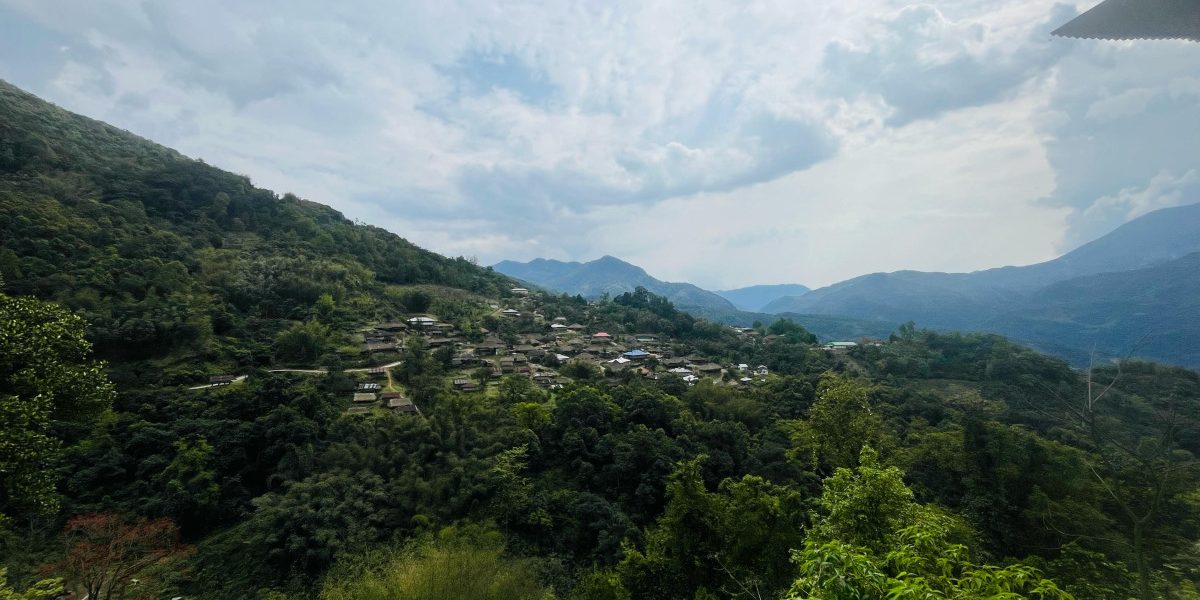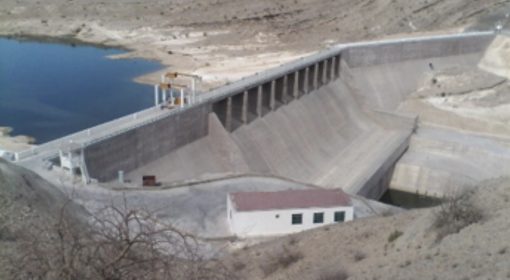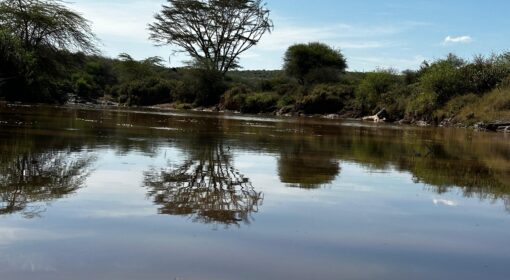By Hilde Nijland and Sumit Vij, originally published on the Wire. Republished on TheWaterChannel with kind permission from the authors.
The project in question has not only raised apprehensions about displacement, anticipated ecological destruction, and cultural erosion, but it may also collapse due to the region’s high seismicity and geological fragility.

Estimates suggest that as many as 27 villages in Arunachal Pradesh will be submerged by the SUMP. Photo: Rupam Bhaduri
In response to China’s Medog Dam, India has entered a race in the Brahmaputra basin, with the Siang Upper Multipurpose Project (SUMP) in Arunachal Pradesh as one of its responses. The project proposes to generate 11,000 megawatt (MW) and is being championed as a step towards India’s sustainable development goals. It also forms a part of the broader strategy to outdo China in this race.
Yet, the push to advance the project has already sparked tensions on the ground: on May 22, 2025, paramilitary forces were deployed in the Siang Valley to facilitate pre-feasibility surveys.
For the local villagers, the project has become a source of unremitting feelings of fear and anxiety. Current estimates suggest as many as 27 villages will be submerged by the SUMP, though the total number of affected villages remains unclear. To be impacted residents – expected to exceed 100,000 – grapple with questions of where they will move, how they will rebuild their lives and whether they will ever find stability again if the SUMP materialises.
“The Government says they will create a model village for us. Where will they create?” asks an elder from Param village, one of the villages at risk of submersion. “We did not get any assurance of a comfortable place to live if we get relocated. We are crying every day”.
“We do not want to go anywhere else,” stresses a middle-aged man from Geku.
Adding to apprehensions of displacement, along with anticipated ecological destruction and cultural erosion, is the persistent fear that the SUMP may sooner or later collapse due to the region’s high seismicity and geological fragility, posing a grave danger to downstream areas, including those as far as Guwahati in Assam. Given the pervasive dissent, the government has recently launched a USD 40 million package focusing on alternative livelihood. However, such packages have been introduced in the past, and their benefits are inadequate and embarrassing.
Such continuous emotional distress is not unique to the SUMP. In the Dibang district of Arunachal Pradesh, too, similar feelings of fear and anxiety have filled the valley over the planned yet highly controversial Etalin Hydroelectric Project (EHP). Although currently only existing on paper, the government’s promise of monetary compensation from last year is already unsettling local communities before its actual disbursement.
Despite the locals’ profound emotional and cultural connections to their lands, offers of compensation have, however, acted like a seductive pull, directing them towards quick economic gain instead. This illustrates how the mere anticipation of a hydropower dam can already undermine social and cultural bonds.
This is even more evident in the Lower Dibang district of Arunachal Pradesh, where the 2,880 MW Dibang Multipurpose Project (DMP) was proposed in 2008. The project was similarly met with strong local resistance, yet construction ultimately commenced in 2023. Monetary compensation was distributed among project-affected families, though many people – especially women and girls – were left deprived.
As a result, the social and cultural fabric of the entire region has changed with an upward trend in young Idu Mishmi (a tribal group) women entering relationships with wealthy, older men for financial security. Meanwhile, many of those who did receive (often relatively low amounts of) money have been found to now also struggle with economic instability and loss of direction. Having always primarily relied on subsistence-based livelihoods, the sudden disbursement of compensation money has led many to pursue luxurious commodities and even engage in gambling, quickly depleting their finances.
These dynamics have fuelled serious concerns among locals about the erosion of cultural norms and communal cohesion.
Furthermore, on the Assam-Arunachal border, the 2,000-MW Lower Subansiri Hydroelectric Project already stands tall over the river Subansiri. The dam’s construction began in 2005, but it has still not been commissioned due to recurring damage and associated safety concerns. The prolonged uncertainty, marked by construction and halts, promises and betrayals, has left entire communities along the Subansiri belt in a state of suspended uncertainty and distress that prevails to this day. Life is held hostage by the perpetual fear of the dam breaking, preventing them from planning for the future.
“I am even scared to make a house here. What if the dam breaks and takes everything away?” says an elderly woman from Gogamukh village near the project site.
While some have already sold their land and moved to different districts of Assam, many could not, and they are living with the possibility of losing their lives someday in case of a dam burst. They also continue to suffer from lower water levels along with unpredictable monsoonal floods due to the dam’s obstruction of natural water flows.
This has drastically reduced agricultural productivity and depleted fish resources in the downstream areas, adding to the feelings of despair and anxiety already experienced.
The Union government is diplomatically cornered and lacks a clear strategy to tackle China’s Medog hydropower project as well as its dominance in the region. The only solution it has found is to join the dam race, without realising the implications of hydropower projects in socio-ecologically and seismically sensitive Brahmaputra Basin.
Although past experiences of hydropower projects in the Northeast have not been positive, the governments – at the Centre and state – continue to circumvent the detrimental impacts, which continuously deplete the culture and biodiversity. The infrastructural violence that the marginalised communities have experienced is unparalleled.
Several anti-dam protests have been launched. However, the governments continue to play the long game, using its time and resources to launch an attack against its own citizens while, simultaneously, undermining its democratic institutions.
Hilde Nijland is a Research Associate, Wageningen University, the Netherlands.
Sumit Vij is an Assistant Professor, Wageningen University, the Netherlands.



